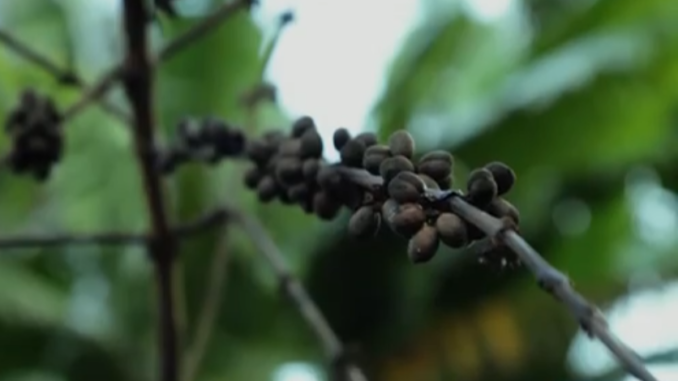
This is important – it’s about coffee, and since we have caffeine in our system we’re going directly to the point: coffee plants are in danger from a fungus that causes a disease called Coffee Wilt. The first outbreak of the disease occurred in the 1920s on coffee farms in Africa. It wasn’t brought under control until the 1950s, but then re-emerged in the seventies and spread widely in the nineties and 2000s. Originally the disease affected many varieties of coffee, but today it’s mainly limited to Arabica and Robusta. Yes, those beans are popular with consumers and growers alike.
In the fifties, growers conquered Coffee Wilt Disease by aggressively destroying with fire any infected plant. They also sought out varieties with a natural resistance to the fungus (Fusarium xylarioides, a.k.a. Gibberella xylarioides) that causes coffee wilt and initiated breeding programs that selected for even more resistance. Another recommendation discourages planting coffee and bananas together, even though coffee plants benefit from the shade provided by the much larger banana plants. More on that in a moment.
In later decades, growers began using fungicides to combat F. xylarioides, but not only is that expensive, it’s unsustainable. As pointed out recently in TNB Night Owl – Fungi Are Crucial, fungicides kill all fungi, destroying the necessary organisms critical to the health of Earth’s biosphere. So, no, not a good idea.
Today, scientists are studying F. xylarioides in order to gain a better understanding of how and why the fungus kills coffee plants. By the way, Fusarium is a genus of fungi that cause disease in many different plants and trees, including commercial crops such as bananas. Panama disease is a threat to the Cavendish banana species, which is by far the most popular commercially-produced banana.
Researchers recently discovered that the DNA of F. xylarioides is larger than it used to be. The newly discovered gene sequence is very similar to a section of DNA from a closely-related species, one that causes disease in bananas and more than 120 other plants. Because bananas and coffee have been grown together in close proximity for decades, the scientists theorize that F. xylarioides ‘borrowed’ a bit of DNA from it’s close neighbor and cousin. It’s a reasonable hypothesis since the largest part of any fungus, the mycelium (thin threads that intermingle with everything underground) would be in physical contact with all of its neighbors.
Interestingly, Arabica and Robusta are effected by two different strains of F. xylarioides. Coffee Wilt is limited to central and east Africa, but should it spread to other coffee growing continents, your cup of joe could become exorbitantly expensive or even impossible to obtain.
This short video demonstrates how coffee growers destroy a diseased plant with fire and sterilize their tools with fire to prevent spread of the fungus. “Coffee wilt disease cultural control” (0:36):
Question Of The Night: Coffee, tea, or Ovaltine, Ralphie? ( That’s an “A Christmas Story” reference, if not immediately obvious – yeah, it’s late and I’m officially tired now).
